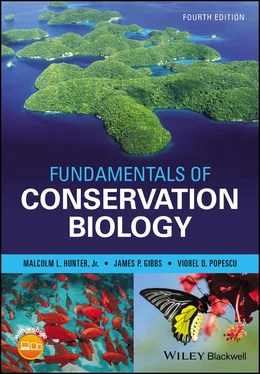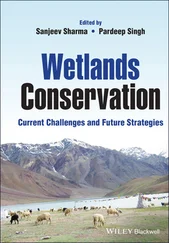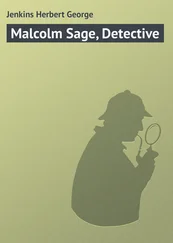5 In one of the major ecosystems near where you live, which “rivets,” if popped out, would be most likely to cause the “plane to crash” (Ehrlich analogy)?
6 What evidence can you cite that supports the idea that ecosystems are just loose collections of species? What evidence refutes the idea? If you do not specifically know of such evidence, how would you design a research program to obtain it?
7 In your region, what type of ecosystem probably has the highest species richness? What type of ecosystem has the greatest ecological value (with its inevitable corollary, how are you defining ecological value in this context)?
CHAPTER 5 Genetic Diversity
The process by which sequences of four simple chemicals – adenine, thymine, cytosine, and guanine – shape a molecule of DNA and, ultimately, all the organisms that comprise the Earth’s biota, is an extraordinary story. It is a story about the foundations of biological diversity because the entire tree of life is rooted in genetic diversity. It can be a rather complex story, and if your recollection of Hardy–Weinberg equilibrium, phenotypes versus genotypes, alleles, diploidy, and so on has rusted a bit, you might find it helpful to review the genetics and evolution sections of an introductory biology textbook before proceeding.
What Is Genetic Diversity?
Charles Darwin articulated long ago in On the Origin of Species the expression of genetic diversity into all forms of biological diversity. Here is his moving description of the “tree of life”:
As buds give rise by growth to fresh buds, and these, if vigorous, branch out and overtop on all sides many a feebler branch, so by generation I believe it has been with the great Tree of Life, which fills with its dead and broken branches the crust of the earth, and covers the surface with its ever‐branching and beautiful ramifications.
(Darwin 1859)
We can now construct the tree of life fairly definitively through genetic analyses combined with bioinformatics ( Fig. 5.1) – the outcome is spectacular if humbling in that the branch upon which we sit (along with fish, mosses, fungi, and all the other eukaryote species) is but a small twig on a vast tree that consists mostly of bacterial diversity. In aggregate the tree of life today is composed of about 50 billion tons of DNA (enough to fill one billion shipping containers), if weighed across all living creatures (Landenmark et al. 2015).

Figure 5.1 The evolution of the “tree of life”. Branching relationships change as our understanding of life’s history improves, from this first rendition of the essential concept from a notebook of Charles Darwin from the mid‐1800s (a) to a modern (2016) metagenomic representation based on molecular genetic data (b).
([a] Charles Darwin/Wikimedia Commons/Public domain; [b] Hug et al. 2016/Springer Nature)
Remarkably, about 3 billion genetic building blocks of DNA, or so‐called “base pairs,” make up each of us as individuals. This would occupy 262,000 pages, or some 175 large books, of which just 500 pages would be unique to us as humans. The reason is that large segments of our genome perform similar functions across the many species. You are 99.9% similar to every other person on Earth with the remaining genes accounting for the differences among us. Chimpanzees and bonobos – our closest living relatives – are 99% genetically similar to us. Cats (Abyssinian domestic cats specifically) share about 90% of their genes with us. We share about 60% of our genome with cucumbers. You get the idea – the shared part of our genetic heritage is essentially the “trunk” and “branches” of the tree of life with the tiny differences among closely related species forming the “leaves” that sprout from the same twig.
A good place to appreciate the magnificent expression of genetic diversity is, of all places, at an agricultural fair. Peppers, squashes, chickens, horses, cattle, and most other domestic species come in an extraordinary array of colors, shapes, and sizes. Some of this phenotypic diversity was shaped by environmental conditions such as the soil in which the peppers were grown, but most of it is based on genotypic differences . In other words, you are seeing the expressions of genetic diversity based on differences in the types and distributions of the genes occurring within every individual.
To get our heads around the concept of genetic diversity, it is helpful to think of it as occurring at five levels of organization: (1) among higher taxonomic categories such as phyla and families;, (2) among species; (3) among populations; (4) within populations; and (5) within individuals. Most conspicuous is the kind of diversity one sees between kingdoms (e.g. plants versus animals), phyla (e.g. arthropods versus chordates), classes (e.g. birds versus mammals), and so on. If one thinks of species as “leaves” on the tree of life, then these are the differences between the twigs, limbs, and branches. As an example, consider the marine domain where there are fewer species (leaves) but more phyla (branches) of animals than there are on land (Norse and Crowder 2005). Such phyletic diversity is highest in the sea whereas species diversity is highest on land.
Still quite conspicuous are the genetic differences that distinguish one species from another, horses from cows, or peppers from squashes, and even different kinds of peppers from one another, such as the more mundane bell peppers versus the “hotter” habanero peppers. We do not always think of the differences between cows and horses as manifestations of genetic diversity because we can usually distinguish species readily without knowing anything about their genes. Species that are an exception to this generalization (i.e. genetically distinct but not obviously so to us) are called cryptic species (see Chapter 3).
The genetic diversity among the populations that constitute a single species can also be quite substantial. The diversity of dogs is a good example. It is hard to believe that a St. Bernard and a Chihuahua represent genetic diversity within the same species and that they differ from one another in the composition of only a few genes. Also, most people who have eaten cabbage, cauliflower, broccoli, kale, kohlrabi, and brussels sprouts their whole lives do not realize that they are genetic variations of the same species, Brassica oleracea ( Fig. 5.2). Of course, these differences have been generated by humans through artificial selection, that is, selective breeding, to amplify these small differences. Among wild populations, genetic diversity is usually not manifested as conspicuously unless perhaps the populations are widely separated geographically. Nevertheless, genetic diversity among populations can be profoundly important; for example, differences among corals of the same species in their tolerance to thermal stress may facilitate adaptation to warmer oceans (Reusch et al. 2005).

Figure 5.2 Most people who have eaten cabbage, cauliflower, broccoli, kale, kohlrabi, and brussels sprouts their whole lives do not realize that they are genetic variations of the same species, Brassica oleracea . In other words, everything visible here is the same species, with differences magnified through artificial selection.
(Charles Smith/Flickr/CC BY 4.0)
Читать дальше














